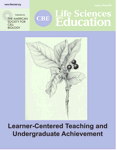What's a Poison Got to Do with It?
INTRODUCTION
At the beginning of the twentieth century it was common to administer poisons to get rid of unwanted people, or simply to ingest poisons by accident. The science of forensic toxicology was not well developed yet, and many death certificates were issued without properly identifying the cause of death. Pulitzer Prize–winning science writer Deborah Blum has created a larger story structured like a set of short stories in which the villains are the poisons and the heroes are Dr. Charles Norris and Alexander Gettler. Norris was New York City's first medical examiner, and Gettler was his toxicologist. Both men performed innovative lab work, helped advance the science of forensics, and saved numerous lives by establishing the toxicity of previously unknown poisons. The subtitle Murder and Birth of Forensic Medicine in Jazz Age New York seems like a marketing strategy because jazz is rarely mentioned in the book. The book is divided into 11 chapters, an introduction, and an epilogue. Each chapter is named after a poison: chloroform, wood alcohol, cyanides, arsenic, mercury, carbon monoxide (parts I and II), methyl alcohol, ethyl alcohol, and thallium. Each poison is connected with short stories, along with advances in forensic toxicology associated with it.
THE PROHIBITION ERA
The story narrated by Blum takes place between 1915 and 1936. The first few chapters address some of the political movement behind Prohibition and how it led to a string of wood alcohol poisoning cases. The initial chapters also introduce the figures of Norris and Gettler. Although some aspects of their personal lives are described, the reader never gets to know them well enough except as tireless investigators, with Norris as a committed chief examiner who used some of his own money to buy equipment and keep his division working properly despite the blatant corruption in New York City's government. Norris was a wealthy Ivy League–educated physician with some training in Europe who fought constant budget battles with the Mayor's office. Gettler was the son of a Hungarian immigrant and worked hard to reach definite conclusions about the cause of death of many bodies that reached his office. The author covers some of the science behind the poisoning mechanism while avoiding too much technicality, thus keeping the reader's interest in each chapter, many of which seem like an episode of CSI.

SOME INCONSPICUOUS POISONS
While the alcohols, cyanides, and chloroform seemed like the most popular poisons at the time, some less obvious poisons, and the challenges those presented to Norris and Gettler, come up in the story. In Chapters 6 and 10, carbon monoxide poisoning caused several deaths, and the difficulty of establishing a lethal dose is discussed. Blum is extremely careful presenting to the lay reader some of the details without taking away the exciting forensic backdrop of the story. In addition, while discussing carbon monoxide, she explains the mechanism of nicotine poisoning (p. 238) as a bonus because it was already known that tobacco smoke contains carbon monoxide. Chapter 5, on mercury poisoning, describes very clearly the chemistry of mercury and how it poisons. As a bonus, lead poisoning is described as well (p. 121) in the context of being used as an additive in gasoline. Perhaps one of the most interesting chapters is the one on radium, Chapter 8, which discusses the famous case of the Radium Girls, who used their lips to shape the brushes used to paint fluorescent dial watches during World War I. The story is compelling and illustrates how some exquisite forensic work led to national policy concerning the use of such radioactive element. Finally, Chapter 11 illustrates the use and misuse of thallium. This chapter points to the lack of adequate regulations from the Food and Drug Administration at the time. Many individuals, particularly women, used dyes and depilatory products containing thallium, and although the American Medical Association issued repeated warnings in the 1930s, “women bought the beauty products anyway” (p. 247).
CONCLUSIONS
The fascinating stories presented by Blum left me to wonder which poisons I may be currently using that will make headlines in the near future. She infuses many interesting anecdotes, thus making sure the reader's attention never ceases. However, like a visually appealing entrée, the book is fascinating but not necessarily satisfying. I was left wondering about the personalities of her two main figures, Norris and Gettler. Their workaholic attitudes are not fully explained. In addition, the conclusion left me craving for more; it is abrupt and weak. This is not such a bad thing; I just wish she had provided a deeper glimpse into the lives of those two individuals who shaped the field of forensic toxicology. Teachers may find plenty of material to bring to the classroom when discussing those poisons. Finally, in the epilogue Blum writes on page 280: “I've learned, along the way, that we never quite leave behind the monster in the closet.” Time will tell.



